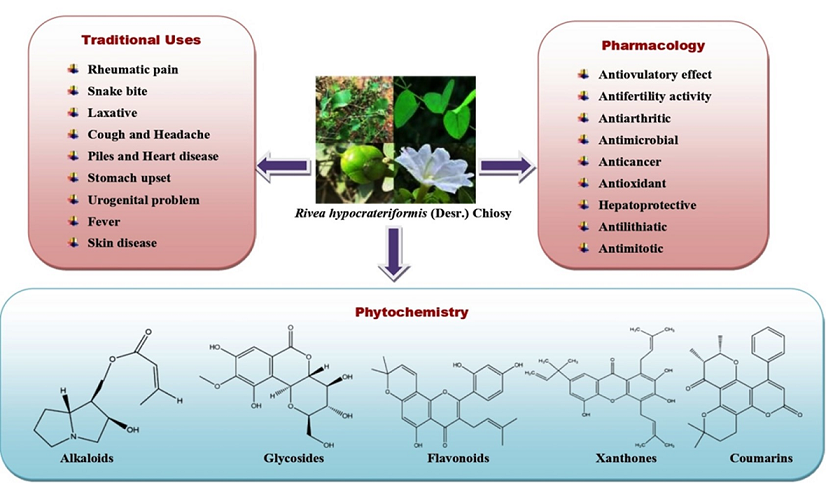Rivea hypocrateriformis (Desr.) Choisy is a robust woody climbing shrub of the genus Rivea which is found in India, Nepal, Sri Lanka, Pakistan, Bangladesh, Myanmar and Thailand. R. hypocrateriformis is a promising medicinal herb with enormous helpful and wellbeing advancing impacts. R. hypocrateriformis has been utilized as a customary medication for a long time to treat rheumatic pain, fever, urogenital problem, snake bite, cough, piles, malaria, and skin disease. Apart from the traditional uses its leaves and young shoots are cooked and eaten as a vegetable and for preparation of bread with millet flour. This review comprehensively summarizes the up-to-date information on the botanical characterization, distribution, traditional uses, phytochemistry, pharmacology and toxicity study of R. hypocrateriformis. Phytochemical investigation has been revealed that alkaloids, glycosides, coumarins, flavonoids, xanthones, stilbenes, and other organic compounds are contained in R. hypocrateriformis. Crude extracts and isolated compounds have exhibited numerous pharmacological activities such as anovulatory effect, antifertility activity, antiarthritic, antimicrobial, anticancer, antioxidant, hepatoprotective, antilithiatic, antimitotic. R. hypocrateriformis is a promising restorative spice with monstrous remedial and wellbeing advancing impacts. Along these lines, further investigations on the bioactive mixtures and systems of R. hypocrateriformis are justified. Extra clinical and toxicological examinations are expected to assess its wellbeing.

